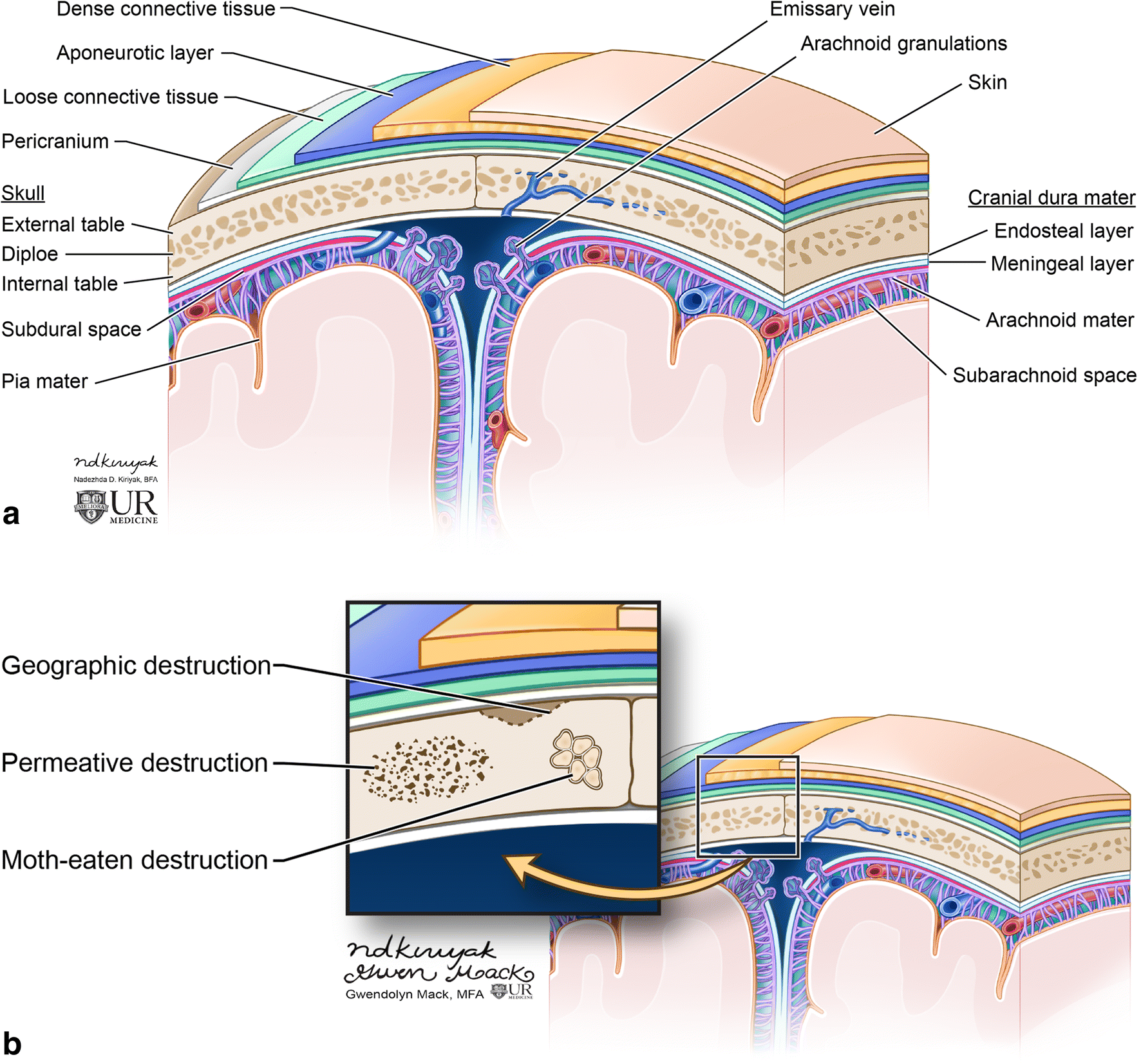ethmoid bone
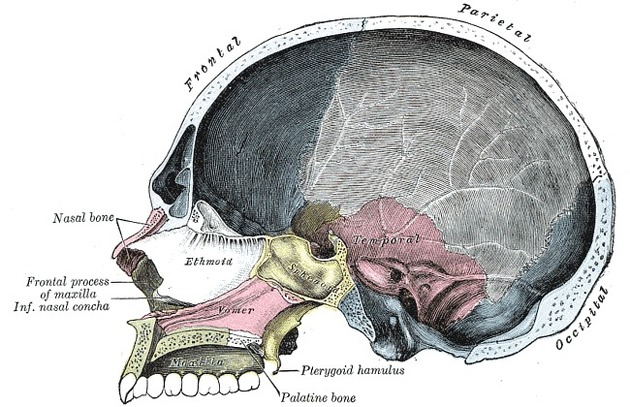
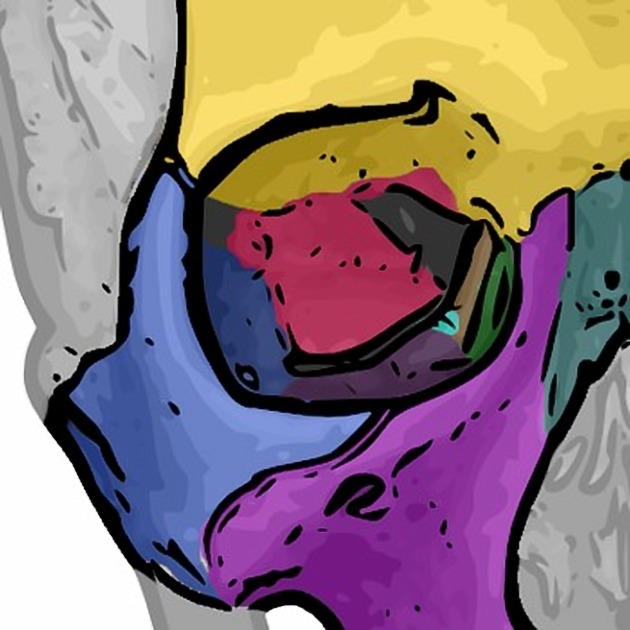

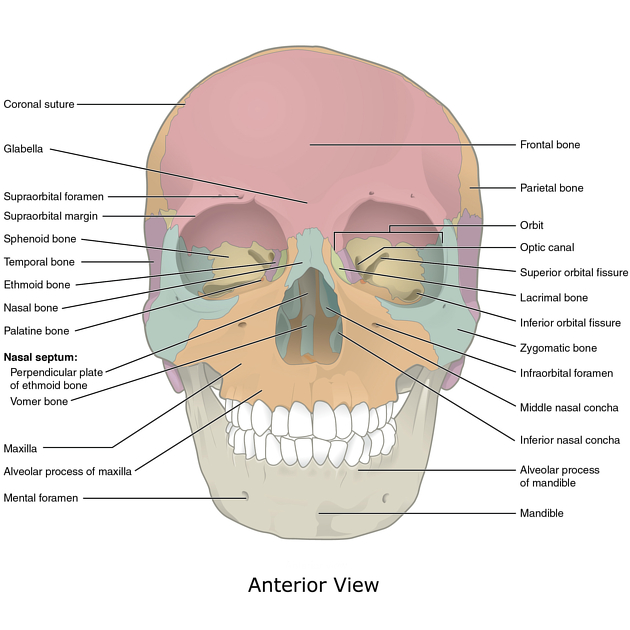

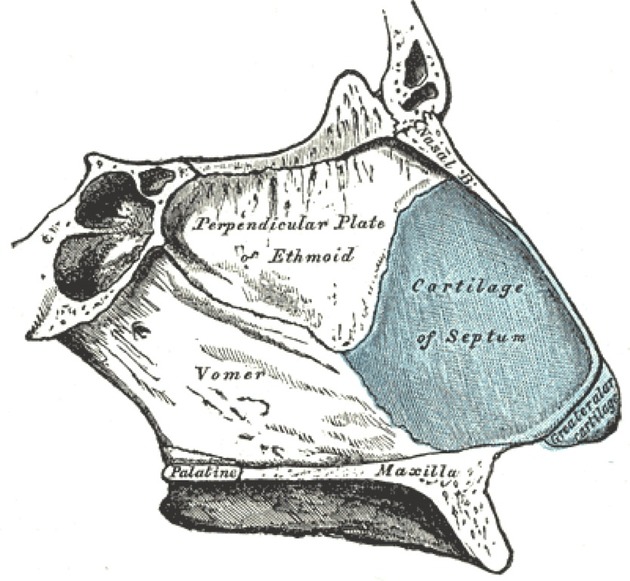
The ethmoid bone is a single midline facial bone that separates the nasal cavity from the brain and is located at the roof of the nose and between the orbits. It is a cubical shape and is relatively lightweight because of its spongy construction. It contributes to the anterior cranial fossa.
Gross anatomy
The ethmoid bone consists of four parts:
- horizontal (cribriform) plate
- vertical (perpendicular) plate
- 2 lateral masses (labyrinths)
The horizontal plate features include:
- foramina in cribriform plate: for olfactory nerve filaments (20), olfactory bulb lies in the olfactory fossa
- crista galli (L: rooster's crest): thick, smooth triangular process, attachment for falx cerebri
- nasal slits: anteriorly, passage of anterior ethmoidal nerve
The vertical plate forms the part of the bony nasal septum:
- anterior border articulates with frontal bone and crests of nasal bones
- posterior border features the sphenoidal crest which articulates with the vomer
Labyrinths (2) house anterior and posterior ethmoidal air cells.
- lateral surface features include: the orbit, lamina papyracea, uncinate process below: medial wall of maxillary sinus which articulates with the inferior concha
- medial surface features include: the nasal cavity, superior nasal concha, middle nasal concha helps form middle meatus, and the infundibulum opens there
- upper surface: grooves articulate with frontal bone to form anterior and posterior ethmoidal canals
Articulations
Articulates with 15 bones in total (4 cranial bones and 11 facial bones)
Cranial bones include frontal, sphenoid, and sphenoidal conchae (2). The facial bones are paired or unpaired. The single unpaired midline bone is the vomer. Paired bones are the nasals, maxillae, lacrimals, palatines, and inferior nasal conchae.
Siehe auch:
und weiter:

 Assoziationen und Differentialdiagnosen zu Os ethmoidale:
Assoziationen und Differentialdiagnosen zu Os ethmoidale:
